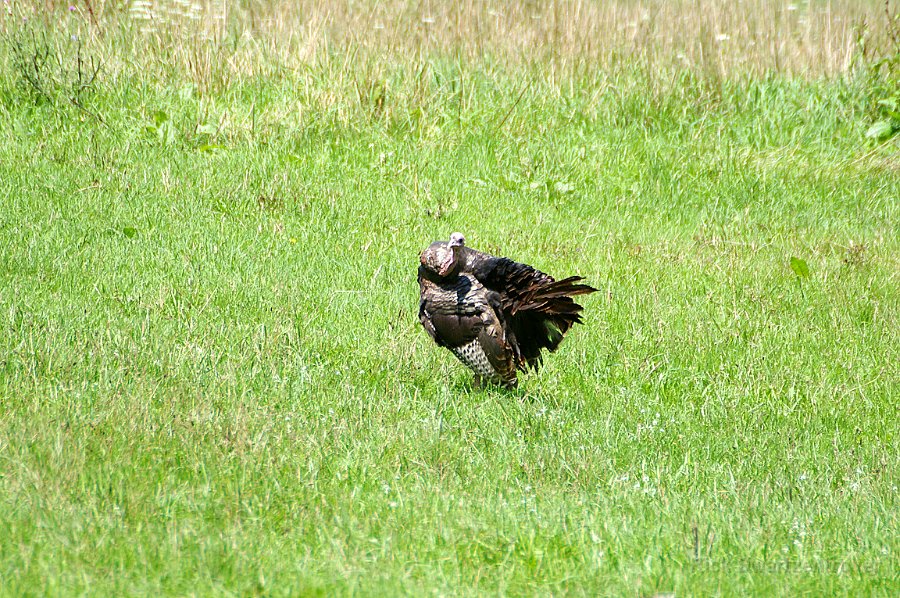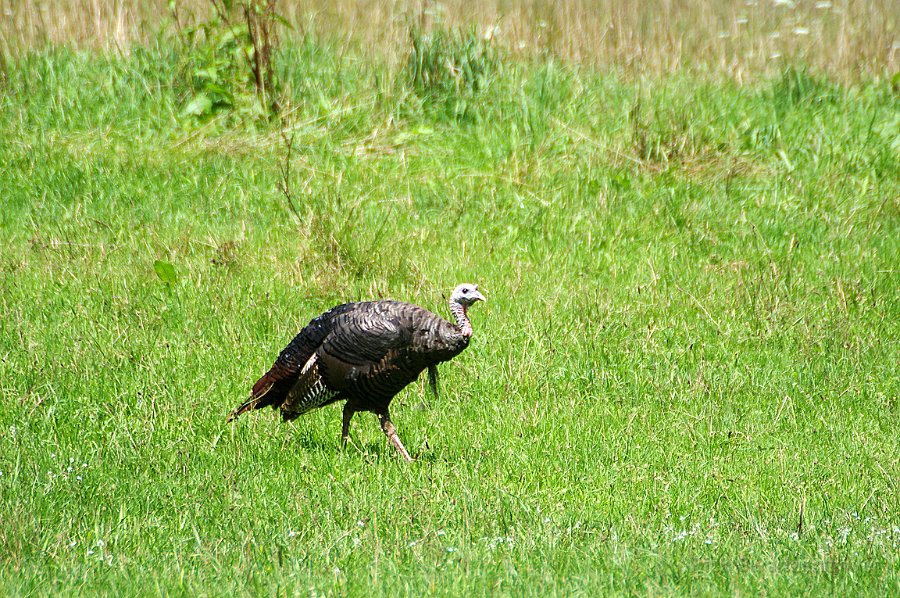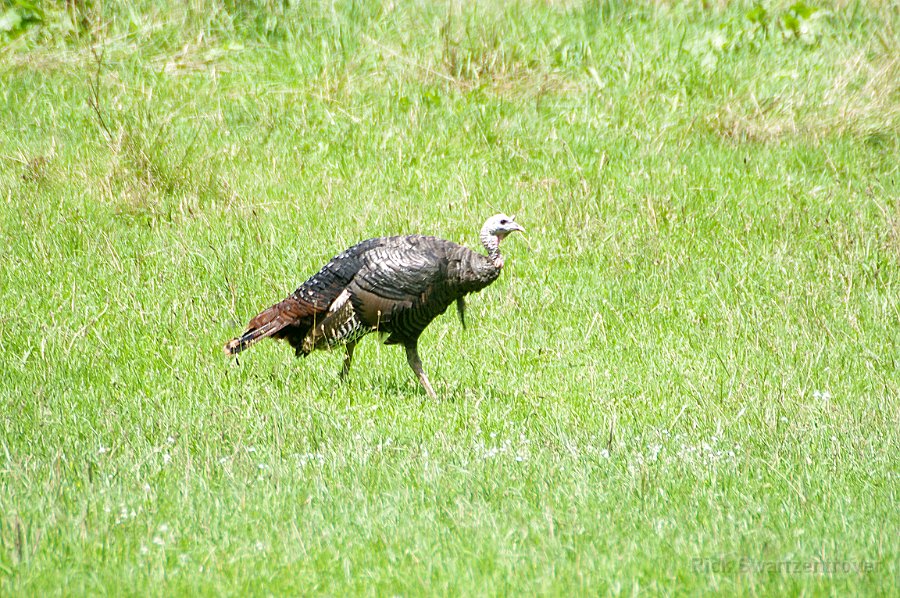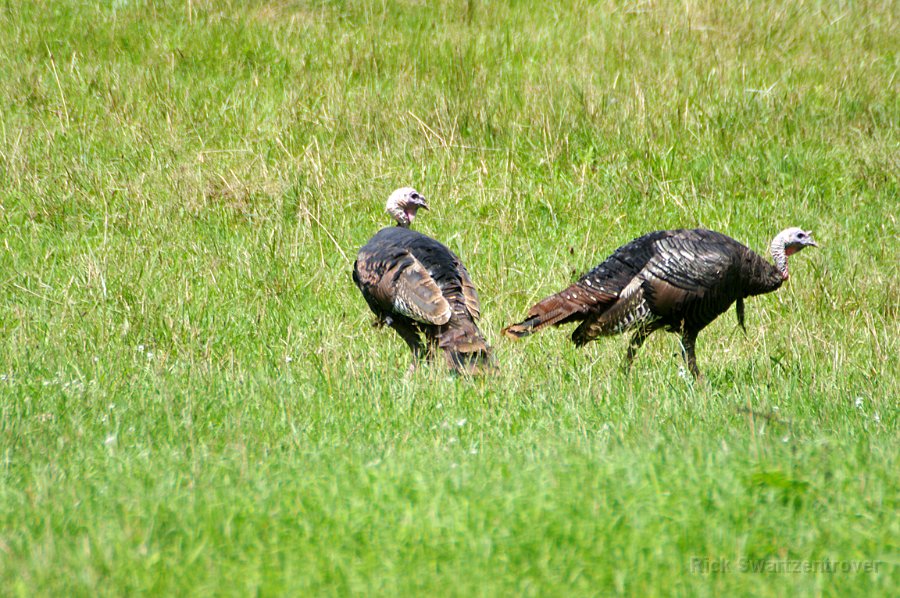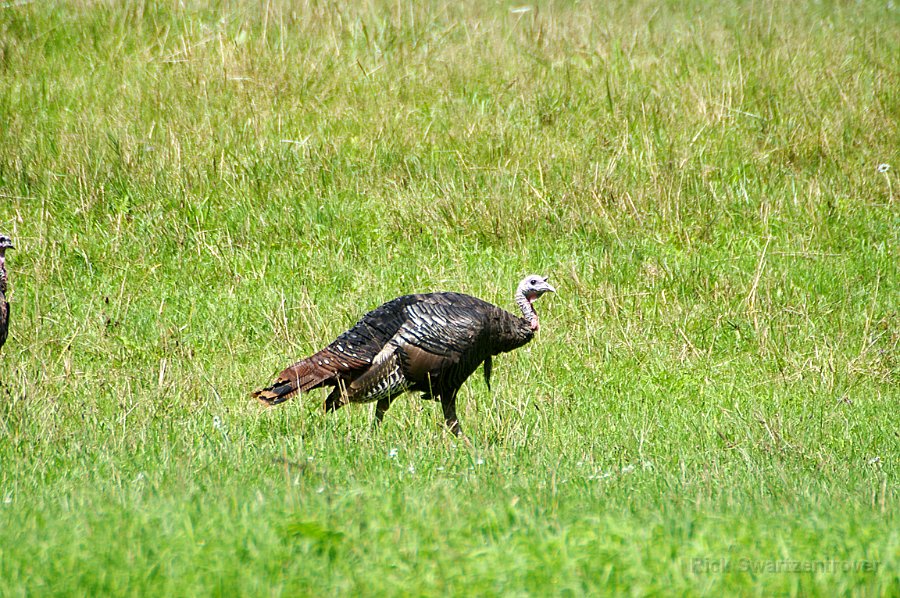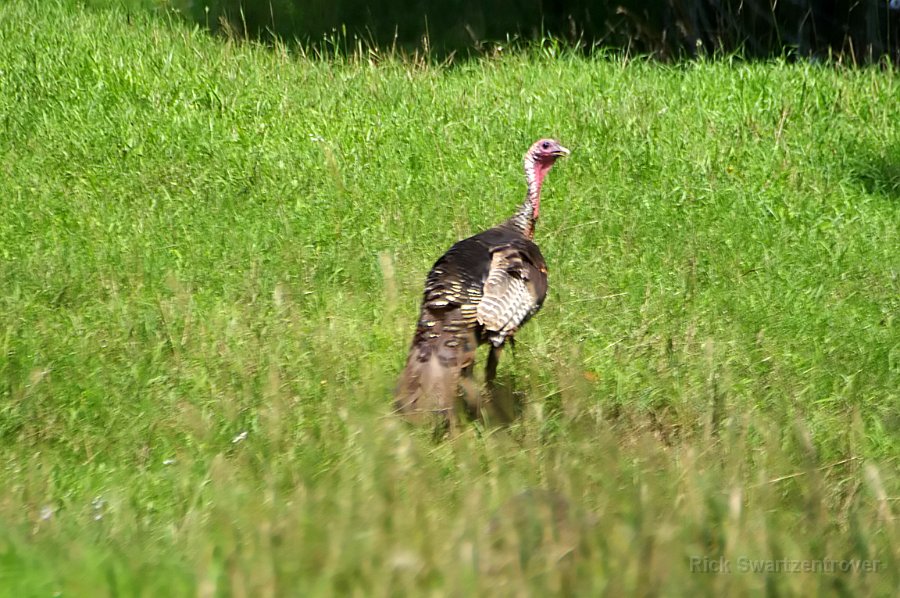|
|
|
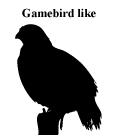 |
Wild Turkey
|
| Meleagris gallopavo | |
The Wild Turkey was a very important food animal to Native Americans, but it was eliminated from much of its range by the early 1900s. Introduction programs have successfully established it in most of its original range, and even into areas where it never occurred before.
Interesting Information
-
A native of North America, the turkey is one of only two domesticated birds originating in the New World. The Muscovy Duck is the other.
-
European explorers took Wild Turkeys to Europe from Mexico in the early 1500s. They were so successfully domesticated in Europe that English colonists brought them back with them when they settled on the Atlantic Coast. The domestic form has retained the white tail tip of the original Mexican subspecies, and that character can be used to distinguish wandering barnyard birds from wild turkeys which have chestnut-brown tail tips.
-
The male Wild Turkey provides no parental care. When the eggs hatch, the chicks follow the female. She feeds them for a few days, but they quickly learn to feed themselves. Several hens and their broods may join up into bands of more than 30 birds. Winter groups have been seen to exceed 200.
-
Attempts to use game farm turkeys for reintroduction programs failed. In the 1940s wild birds were caught and transported to new areas, where they quickly became established and flourished. Such transplantations have been responsible for the spread of the Wild Turkey to 49 states. (Alaska is the only U.S. state without turkeys.)
Description
Adult Description
-
Large, dark ground-dwelling bird.
-
Long, powerful legs.
-
Large, fan-shaped tail.
-
Bare head and neck.
-
Short, slightly downcurved bill.
-
Tip of tail chestnut-brown (in East) or white (in Southwest).
-
Length
-
43.3-45.3 in; 110-115 cm
-
-
Wingspan
-
49.2-56.7 in; 125-144 cm
-
-
Weight
-
88.2-381 oz; 2500-10800 g
-
Sex Differences
Male Description
Breast feathers tipped with black. Head and neck blue-gray with pink wattles. During spring display, forehead white, face bright blue, neck scarlet. Spurs on legs. Beard long and obvious, larger on older birds.
Female Description
Breast feathers tipped with brown, gray, or white. Head with small feathers. Beard small, if present.
Immature
Immature similar to adult.
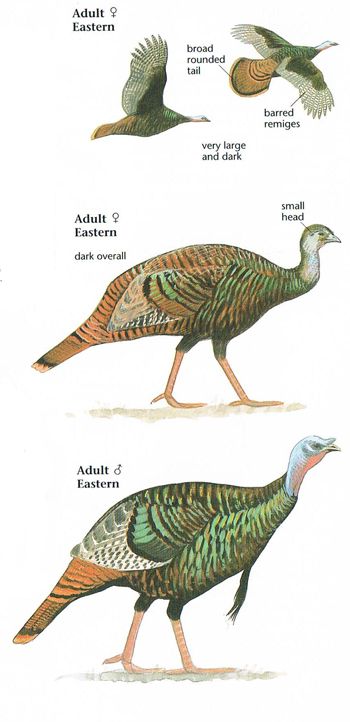
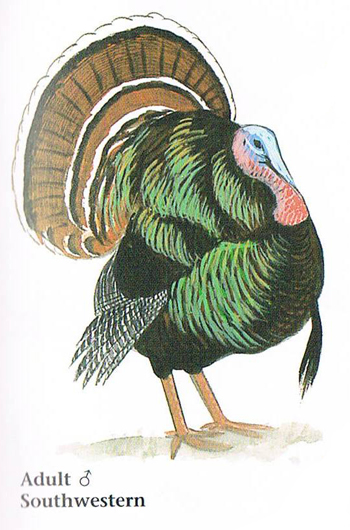
Photo taken from: The Sibley Field Guide by David Allen Sibley
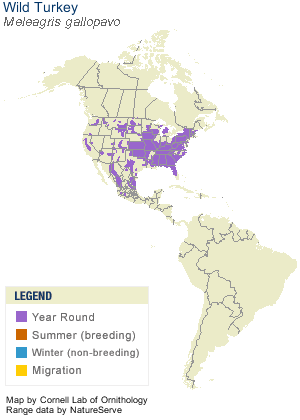
© 2003 Cornell Lab of Ornithology
|
Habitat |
|
Found in hardwood forests with scattered openings, swamps, mesquite grassland, ponderosa pine, and chaparral. |
|
Behavior |
|
The male gobbles to attract females. When she appears, he struts around her. He has his tail fanned and held up vertically, lowers his wings so that the wingtips drag on the ground, raises the feathers on his back, throws his head back onto his back with the bill forward, and inflates his crop. He makes occasional deep "chump" sounds, followed by a low "humm," and accompanied by a rapid vibration of his tail feathers. During the strut his facial skin engorges and the colors intensify, especially the white forehead. Forages on ground in flocks. Scratches ground to uncover nuts. |
|
Food |
|
Acorns, nuts, seeds, fruits, insects, buds, fern fronds, salamanders. |
Taxonomy
| Kingdom: | Animalia |
| Phylum: | Chordata |
| Subphylum: | Vertebrata |
| Class: | Aves |
| Order: | Galliformes |
| Family: | Phasianidae |
| Subfamily: | Meleagridinae |
| Genus: | Meleagris |
| Species: | Meleagris gallopavo |
| Subspecies: | Meleagris gallopavo gallopavo |
| Meleagris gallopavo intermedia | |
| Meleagris gallopavo merriami | |
| Meleagris gallopavo mexicana | |
| Meleagris gallopavo osceola | |
| Meleagris gallopavo silvestris |
Similar Species |
|
Domestic turkey with white tip to tail. |
|
Bird Sound |
|
Male display an explosive gobble. Call a rather nasal yelp. |
|
Eggs look like this |
|
Photo taken from: ARCTOS Collaborative Collection Management Solution |
